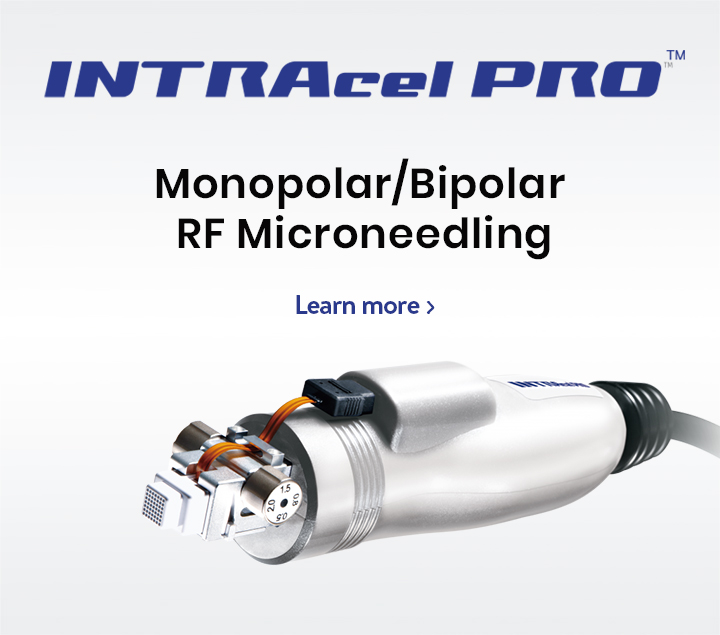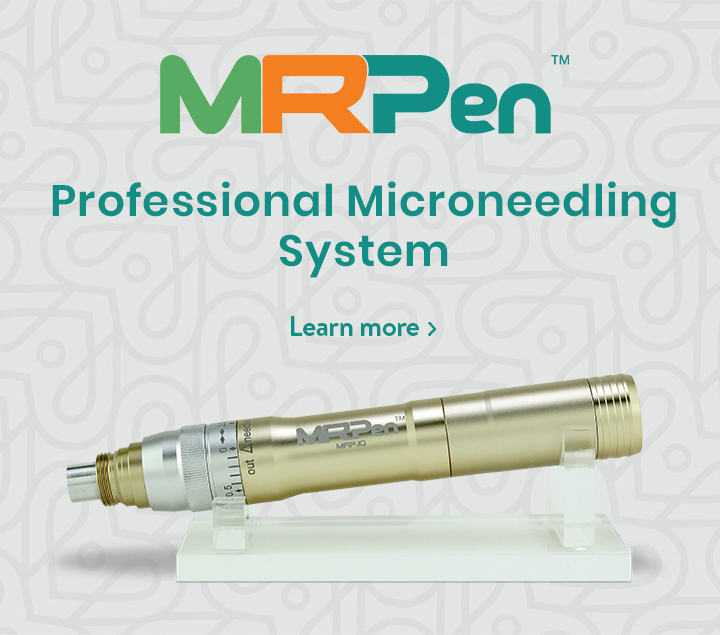Anybody who knows anything about skincare knows the magic word: exfoliation. If only there was a way to exfoliate, extract debris, and hydrate all the same time. Now, there is!
Dermalinfusion has taken the beauty world by storm, offering a 3-in-1 treatment that leaves both clients and aesthetic practitioners happy. But what exactly is this procedure, and should you start offering it to your clients? In this article, we’ll discuss everything you need to know about Dermalinfusion so you can decide whether it’s a good addition to your clinic.
What is Dermalinfusion?
Dermalinfusion (sometimes called Derma fusion), developed by the renowned dermatological company Envy Medical, Inc. (now Allergan/Abbvie), is one of the most popular non-surgical, non-invasive, skin resurfacing methods in aesthetics due to its relatively low cost, no downtime, and ability to cleanse and improve skin effectively. This is an FDA-approved treatment that can be applied to a wide variety of of skin concerns, including but not limited to:
- Wrinkles
- Flaky or dry skin
- Acne scars and breakouts
- Hyperpigmentation
- Rosacea
- Stretch marks
- Sun damage
Dermalinfusion works similarly to microdermabrasion and can be used on different regions of the body, including more sensitive areas that are too delicate for harsher treatments. It exfoliates the skin, but unlike microdermabrasion, it has the ability to also inject the skin with customized serum solutions.
The goal of a Dermalinfusion treatment is to improve the skin's moisture barrier and create a natural sheen for that glowy, dewy look. This treatment is so mild that it can be used on even the most delicate skin. This dermal facial is frequently offered in advance of important occasions, like weddings or corporate events, because of the instantly noticeable results.
Dermalinfusion vs. Hydrafacial: What’s the Difference?
Before we continue, let’s clarify a common source of confusion. Dermalinfusion and Hydrafacial therapy are both effective rejuvenation methods. However, they are often utilized for distinct purposes and require different processes.
Hydrafacial: A non-invasive, restorative facial, the Hydrafacial machines combine exfoliation, suction, hydration and serum infusion to treat your skin. It is a safe treatment, it causes no discomfort, and it is effective against a variety of age-related skin concerns. Treatments take about 30 minutes, with virtually no pain or downtime.
When comparing Dermalinfusion to a Hydrafacial, this treatment offers a few unique benefits:
- To combat signs of aging, Dermalinfusion provides a more targeted approach with medical-grade serums and a dedicated diamond-tipped handpiece to exfoliate skin (vs using chemicals). It is conceptually closer to providing exfoliation that is closer to a resurfacing.
- Compared to a HydraFacial, the effects of a Dermalinfusion facial are deeper and more lasting.
- Using a surgical-grade diamond tip and pneumatic vacuum, the Dermalinfusion handpiece is capable of exfoliating the skin powerfully while simultaneously allowing serum infusion.
- Dermalinfusion can be administered to the face, body, and hands.
- Compared to a HydraFacial, Dermalinfusion provides superior outcomes in terms of hydration, volume, and restoring the skin’s glow.
Ultimately, both are a great option for any client looking to renew and restore their skin’s appearance. Both can be performed in a clinic with no down time, so your clients can get right back to their busy schedules.
Dermalinfusion: Pros & Cons
Dermalinfusion has shown promise in treating a variety of skin conditions, but how do you know if this popular treatment is a good addition to your clinic? Before you invest in expensive equipment, let’s review the dermal infusion benefits and disadvantages.
Pros
Dermalinfusion is superior to microdermabrasion in many ways since it provides a more effective exfoliating method with the ability to inject serum solutions. It’s also easier to customize treatments thanks to the hand-held wand. So what common skin conditions can Dermalinfusion help you treat?
Rosacea
Thirty rosacea patients were treated with Dermalinfusion twice monthly for 12 weeks in a 2006 trial. Within four weeks, every single participant’s redness, red patches, and pustules significantly diminished. Yep, you read that right — every single one!
Pigmentation
Skin discoloration, or hyperpigmentation, can be caused by several different medical issues, such as skin inflammation caused by UV damage, acne, or hormonal shifts.
One case study's post-inflammatory hyperpigmentation was successfully treated with a combination of daily topical decapeptide-12 and biweekly Dermalinfusion.
Minimize the appearance of Acne scars
In some cases, Dermalinfusion facials can even help with acne scars. As little as four Dermalinfusion treatments may be needed to observe positive results. However, in most cases, more than six sessions are required to see significant improvement. Paying the dermal infusion cost for several sessions may be needed for your clients to achieve the desired results.
While common treatments target issues such as acne, rosacea, and pigmentation, it can also address problems such as skin tone, texture, volume and help rehydrate dry skin.
Cons
Redness & Sensitivity
As with any exfoliating treatment, there might be some very minor side effects afterwards. It’s important to warn your clients that they may experience slight redness and sensitivity following treatment.
More Limitations
It is not recommended to perform Dermalinfusion if your clients have any of the following conditions:
- Open sores
- Autoimmune disorders
- Carcinoma
- Immunodeficiency
- Thin skin
What Do You Need to Start Providing Dermalinfusion Treatments?
The Envy Medical SilkPeel Dermalinfusion System will provide your clinic with all the tools necessary to perform this highly popular, new procedure. The SilkPeel Dermalinfusion System, which includes a Dermalinfusion Handpiece, diamond, and cleaning tips, is designed to safely exfoliate the epidermis and address a wide variety of skin conditions.
Dermalinfusion is designed to offer your clients’ skin increased moisture for natural radiance, and the SilkPeel has been developed to exfoliate the skin in an effective yet controlled manner. Online marketplaces like MRP have a variety of new and pre-owned equipment at competitive prices, so you can offer your clients great treatments with devices that suit your budget.
How to Prepare Your Clients for Dermalinfusion
It’s important that you have the answers to your clients’ most pressing questions. Let’s review some FAQs below:
How long does a Dermalinfusion facial take?
Dermal infusion therapy is relatively simple and typically takes between 30 minutes and an hour to perform.
What happens during Dermalinfusion treatment?
A Dermalinfusion facial is among the most efficient and effective methods of skin resurfacing. In a single treatment, clients will see their skin become visibly brighter, smoother, and more moisturized. But your clients will want to know: how exactly does this happen?
Dermalinfusion is a multi-step treatment that removes dead skin cells, cleanse the skin, and infuses it with serum. The therapy involves the use of an exfoliating wand with either a diamond or disposable vortex tip. A disposable vortex tip employs a proprietary method for exfoliating, and the diamond-tipped wand is about the size of a pen.
How does it work? There are 3 main steps to the treatment:
1. Exfoliation
The first thing the Dermalinfusion device does is exfoliate the skin. Instead of using loose crystals, as is done with typical exfoliating methods, Dermalinfusion employs a diamond tip to get more precise results. This makes it easier to avoid contact with sensitive areas like the lips and eyes while the treatment is performed.. Exfoliation removes all traces of dry, dull, and dead skin cells, revealing a newer, healthier layer of skin beneath.
2. Extraction
The Dermalinfusion device simultaneously exfoliates and employs vacuum pressure to remove impurities from the skin. The extraction process eliminates deep-seated blackheads, pore blockages, and germs, while the exfoliation process gets rid of the top layer of dead and damaged skin cells. This prepares the skin to receive the serum by completely cleansing each pore and removing any dirt and debris that may have gathered underneath the skin.
3. Serum Infusion
A hydrating serum infusion penetrates deeply into the skin when it is most receptive — after dead skin cells have been exfoliated away. The infusion of the serum is why it’s sometimes called an “infusion facial”. Whether your client is looking to treat dry spots, oiliness, sun damage, fine wrinkles, or acne, the application of this serum post-exfoliation will provide a great ally in restoring the skin’s natural glow and health. The serum is applied by moving the pen slowly and softly over the skin. The result is smoother, plumper and more radiant skin.
Find Your Dermalinfusion Machine with MRP
Aesthetic professionals can find a variety of equipment and supplies on the MRP aesthetic marketplace . MRP’s team of experts can provide you with equipment advice based on your actual needs and budget. Contact MRP today to find a Dermalinfusion machine for your clinic.



